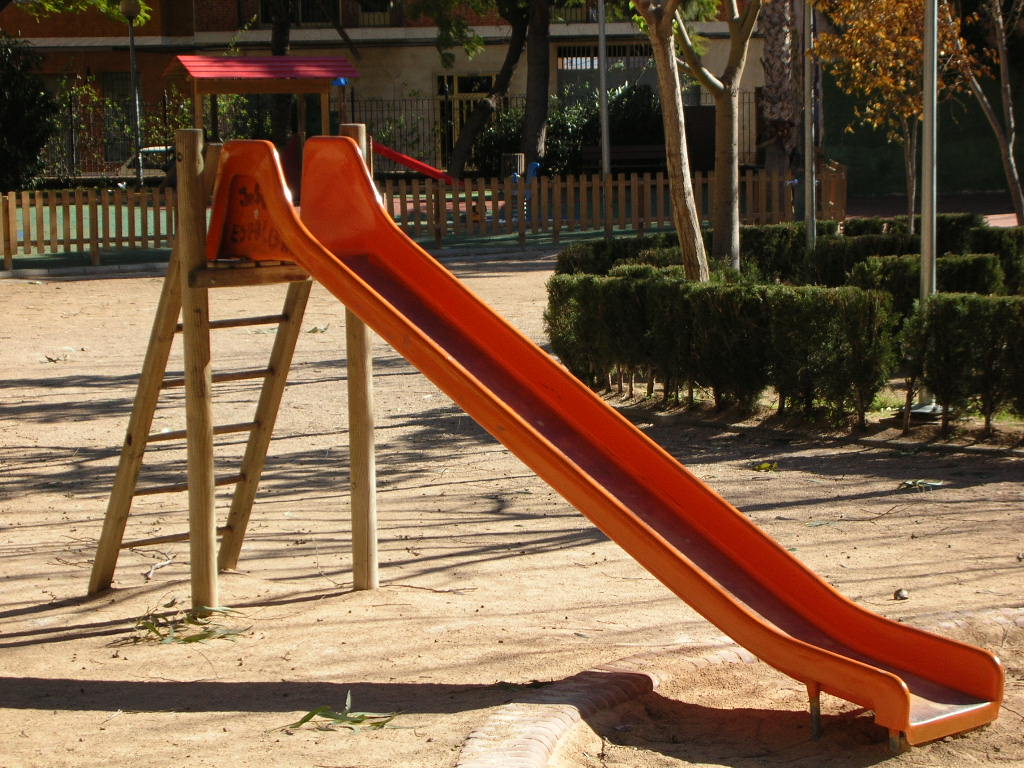"Slide in Parque" by Fotoblog Rare from VLC, SP - Flickr. Licensed under CC BY 2.0 via Wikimedia Commons.
Playground slides are found in parks, schools, playgrounds and backyards. The slide may be flat, or half cylindrical or tubular to prevent falls. Slides are usually constructed of plastic or metal and they have a smooth surface that is either straight or wavy. The user, typically a child, climbs to the top of the slide via a ladder or stairs and sits down on the top of the slide and "slides" down the slide. In Australia the playground slide is known as a slide, slippery slide or slippery dip depending on the region.
Sliding pond or sliding pon is a term used in the New York City area to denote a playground slide.
The slide was invented by Charles Wicksteed, and the first slide, made of planks of wood, was installed in Wicksteed Park in 1922. The discovery of Wicksteed's oldest slide was announced by the company in 2013.
A playground slide may be wrapped around a central pole to form a descending spiral forming a simple helter skelter.
Playground slides are associated with several types of injury. The most obvious is that when a slide is not enclosed and is elevated above the playground surface, then users may fall off and incur bumps, bruises, sprains, broken bones, or traumatic head injuries. Some materials, such as metal, may become very hot during warm, sunny weather.
Some efforts to keep children safe on slides may do more harm than good. Rather than letting young children play on slides by themselves, some parents seat the children on the adult's lap and go down the slide together. If the child's shoe catches on the edge of the slide, however, this arrangement frequently results in the child's leg being broken. If the child had been permitted to use the slide independently, then this injury would not happen, because when the shoe caught, the child would have stopped sliding rather than being propelled down the slide by the adult's weight.


